The Evolution of Patient-Centric Virtual Care
Virtual primary care (VPC) has emerged as a pivotal element in modern healthcare, blending technological innovation with the essential human element of trust. With digital platforms enabling continuous, relationship-focused interactions between patients and providers, VPC offers an unprecedented opportunity to enhance healthcare delivery's accessibility, personalization, and effectiveness. This article explores how virtual primary care operates, its key features and benefits, and the profound impact it has on building enduring patient-provider relationships, all within a framework that supports the future of health systems worldwide.
Understanding Virtual Primary Care Services and Their Operations
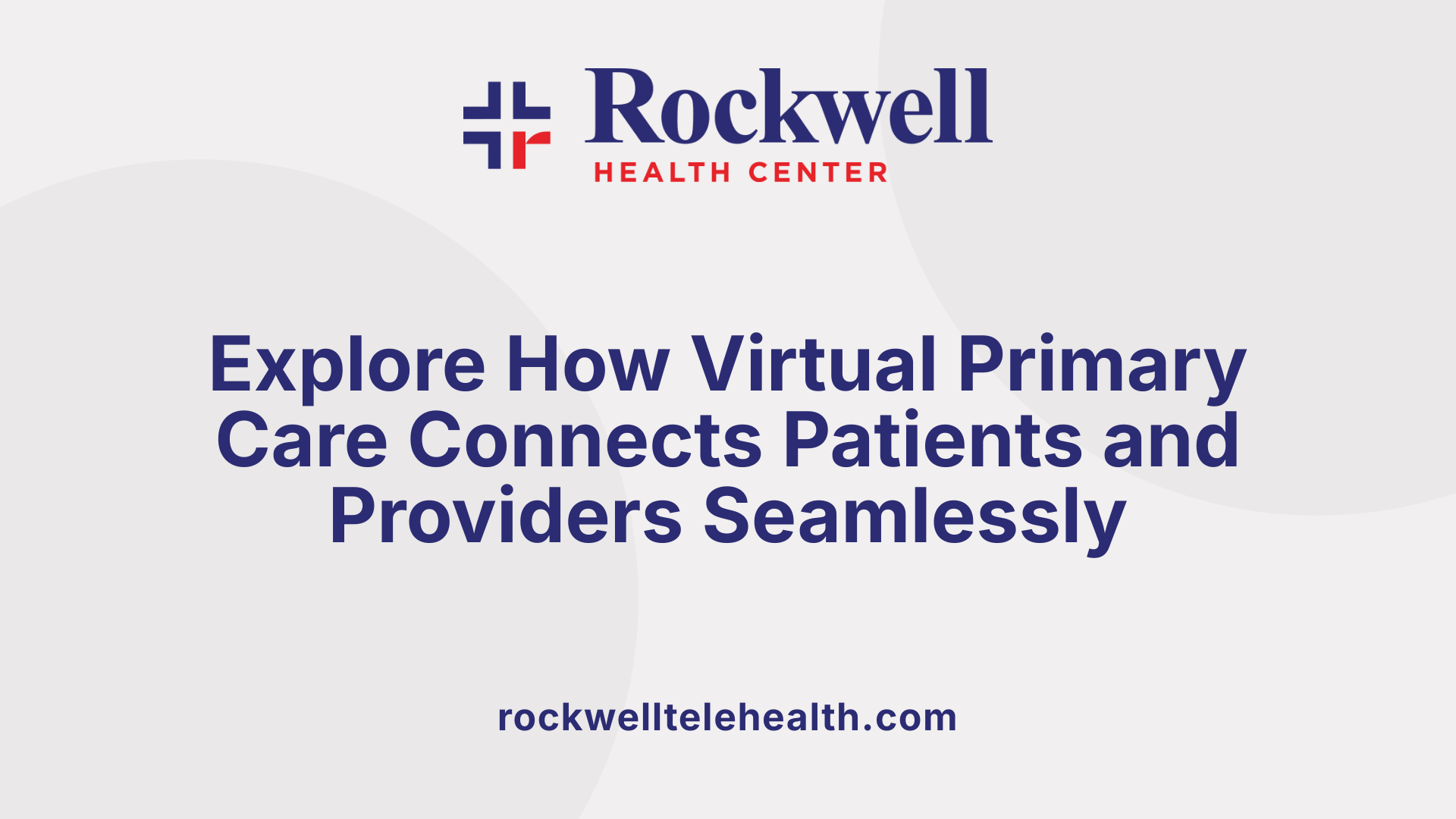
What are virtual primary care services and how do they operate?
Virtual primary care (VPC) offers comprehensive healthcare delivery through digital platforms, primarily using video visits to connect patients with board-certified providers. Unlike urgent or episodic telehealth services, VPC emphasizes ongoing, relationship-based care, allowing patients to develop a trusted relationship with their provider over time.
These services include scheduled virtual appointments for preventive care, chronic condition management, mental health support, and treatment of minor health concerns. Patients can access care 7 days a week, often with quick appointment availability, which helps reduce wait times and improve access.
Technology plays a crucial role in VPC, integrating electronic health records, secure video conferencing, remote monitoring tools, and messaging systems. This integration supports continuous communication, collaborative decision-making, and seamless follow-up care.
Care coordination is central to VPC. Providers can order lab tests, prescribe medications, refer patients to specialists, and coordinate in-person care when necessary. This holistic approach helps ensure patients receive comprehensive care that’s tailored to their needs.
Overall, virtual primary care provides a high-quality, accessible service that promotes ongoing relationships between patients and healthcare providers. It combines advanced technology, multidisciplinary teams, and a patient-centered philosophy to address a broad range of health concerns, making healthcare more convenient and personalized.
Features and Benefits of Virtual Primary Care
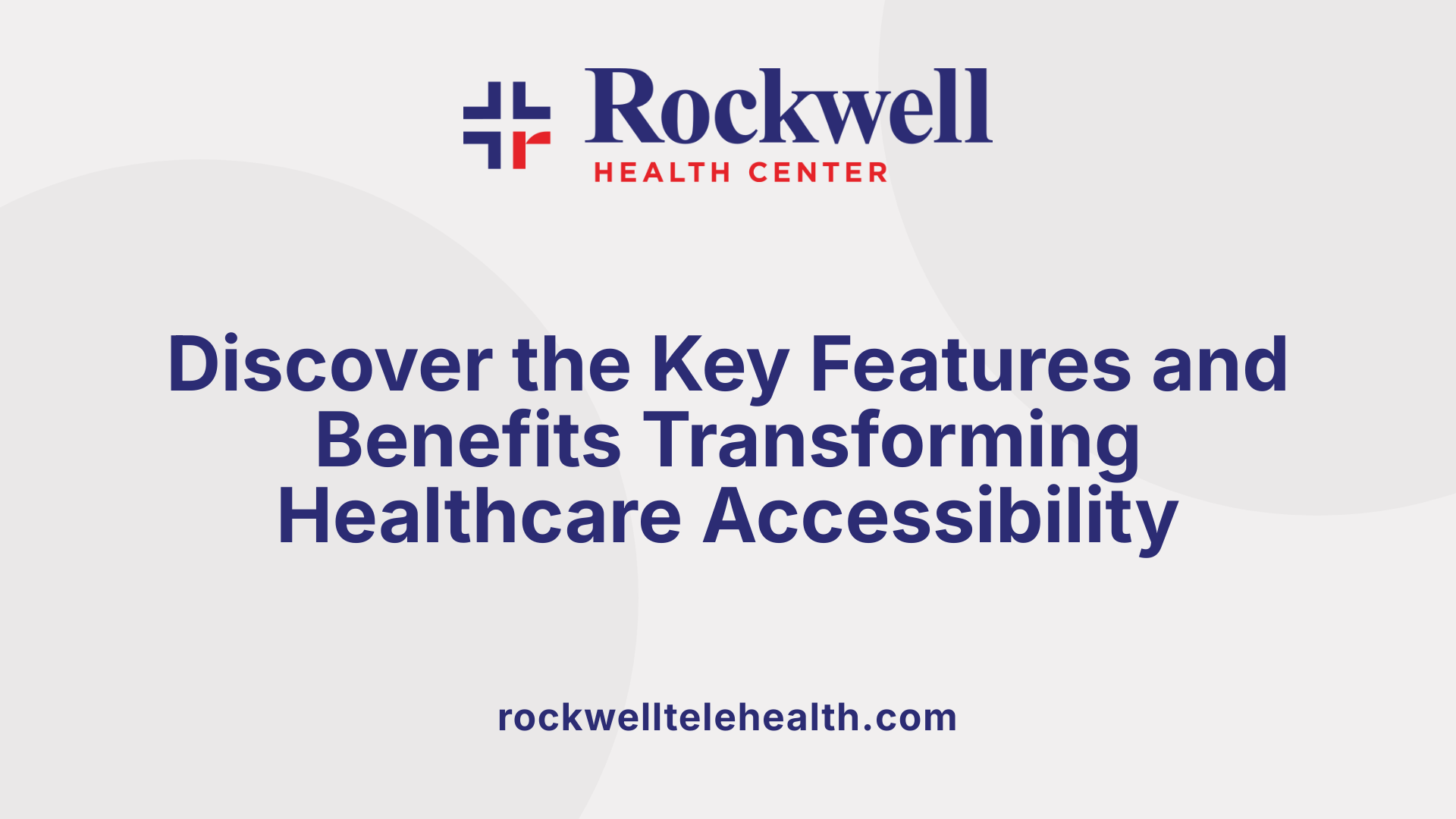
What are the key features and benefits of virtual primary care?
Virtual primary care (VPC) offers a modern approach to healthcare, blending technology-enabled services with personalized, continuous patient-provider relationships. One of its core features is the ease of access: patients can schedule appointments online up to seven days a week from early morning to late evening, eliminating traditional barriers like travel and waiting times.
Through secure video platforms, patients can consult with board-certified healthcare providers for a range of health concerns, including chronic disease management, minor illnesses, mental health support, and preventive care. These virtual visits often mirror the quality of in-person appointments, with providers diagnosing and treating many similar conditions such as allergies, flu, diabetes, and skin rashes.
A significant advantage of VPC is the commitment to ongoing, relationship-centered care. Patients can build trust with their providers over time, leading to better health outcomes. The integration of digital tools, including patient portals like LiveWell and apps for sharing health information, supports seamless follow-up, messaging, and medication management.
VPC also excels in care coordination. Providers can collaborate with specialists, order lab tests, and arrange in-office visits if necessary, ensuring a holistic approach. During the COVID-19 pandemic, this model proved invaluable, maintaining continuity of care while reducing exposure risks.
The digital nature of VPC enhances communication, making it more focused and efficient. Many patients report shorter, more targeted conversations that leave them feeling more informed and engaged in their health. Furthermore, this approach offers significant convenience, especially for caregivers supporting aging or mobility-challenged individuals, and for those living in remote areas.
Research indicates that virtual care can be as effective as in-person visits. High patient satisfaction, comparable health outcomes, and improved adherence to treatment plans affirm its value. Many insurance plans now cover VPC, making it an accessible option for a broad population.
In summary, virtual primary care combines innovative technology with compassionate, relationship-driven service. It improves access, fosters continuous care, and enhances overall healthcare quality, offering a comprehensive, efficient, and patient-centered alternative to traditional in-person primary care.
Fostering Strong Patient-Provider Relationships in a Virtual Environment
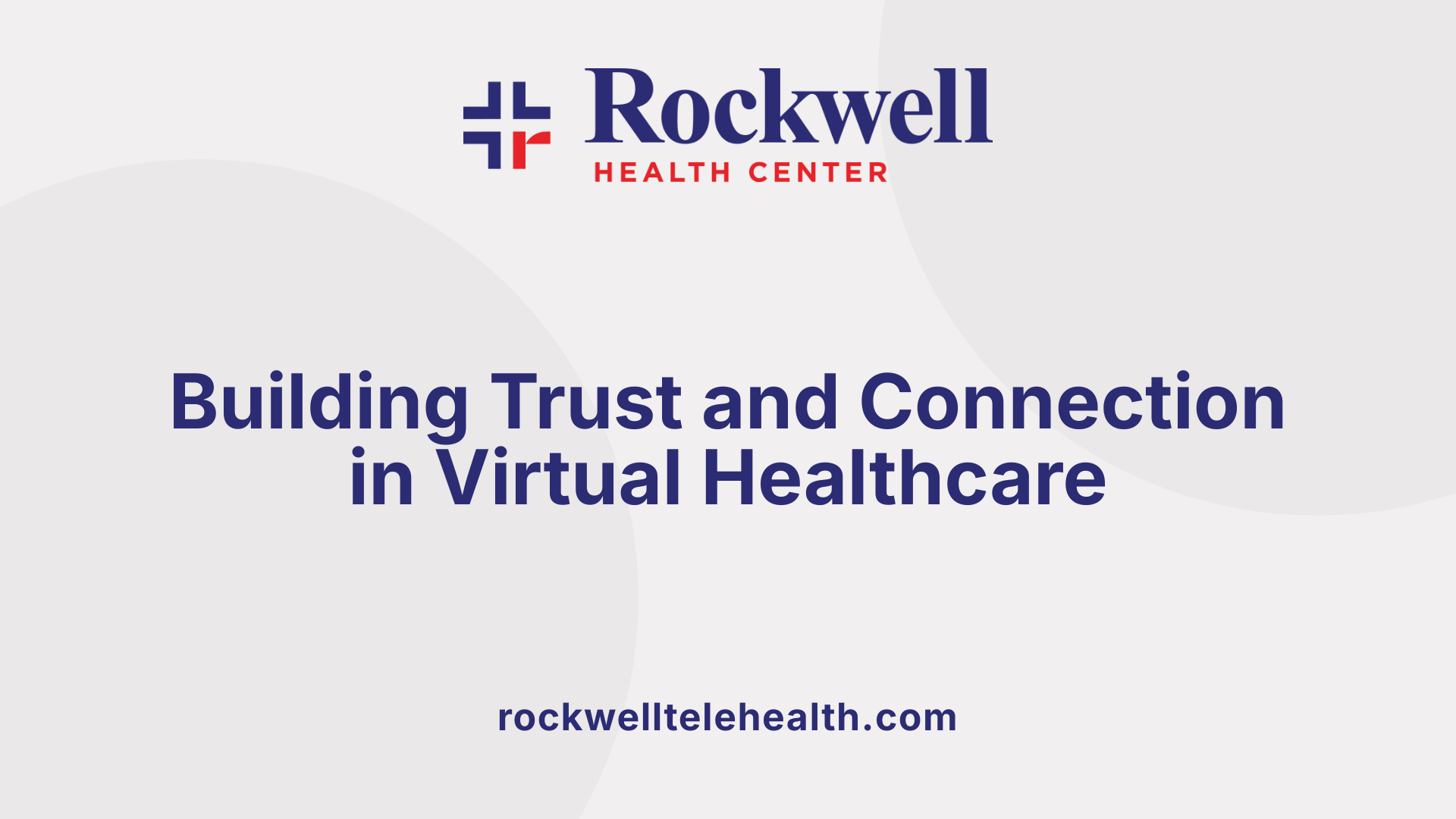
How does virtual primary care help build strong patient-provider relationships?
Virtual primary care can significantly enhance the relationship between patients and their healthcare providers by offering continuous, easy-to-access communication channels. This ongoing contact fosters a sense of trust and familiarity, which is crucial for effective healthcare. When patients already have established relationships with their providers, virtual visits allow for deeper insights into their lifestyles, social circumstances, and overall health context, enabling more personalized care.
Video consultations play a vital role by supporting non-verbal cues and visual assessments, which help maintain relational depth. These visual elements can lead to more empathetic and attentive interactions, even when physical presence isn’t possible. While challenges like technological glitches, privacy issues, and limitations in performing physical examinations exist, they can be mitigated with proper planning, provider training, and technology improvements.
Ultimately, though virtual care presents some hurdles, it offers the opportunity for strong, ongoing relationships if centered around patient needs, preferences, and trust-building strategies.
Impacts on Patient Engagement and Satisfaction

What impact does virtual primary care have on patient engagement and satisfaction?
Virtual primary care has significantly shaped how patients connect with healthcare providers, often resulting in increased engagement and higher satisfaction. This mode of care makes accessing medical services more convenient, eliminating the need for travel and reducing wait times. Patients frequently report that virtual visits are as valuable as traditional in-person appointments, particularly when it comes to managing chronic conditions or addressing minor illnesses.
One of the standout benefits of virtual primary care is its ability to offer timely responses. Many services are available 7 days a week from early morning until late evening, providing flexibility that fits into diverse schedules. This accessibility fosters active participation in health management, as patients can easily schedule follow-ups, message their providers, and stay informed about their health status through secure portals.
Virtual care also broadens access to underserved populations, such as those living in rural areas or with mobility challenges. By bridging geographical gaps, it supports continuity of care and encourages regular engagement with healthcare teams. Patients with chronic diseases, mental health concerns, or preventive care needs benefit from consistent monitoring and guidance, which can lead to improved clinical outcomes.
However, satisfaction isn't uniform across all demographics. Older adults or individuals unfamiliar with digital tools may initially feel less comfortable with virtual platforms, potentially impacting their experience. Providers must tailor interactions, ensuring clarity, patience, and support as patients adapt to virtual formats.
Furthermore, strong existing therapeutic relationships tend to enhance satisfaction in virtual care. Trust and familiarity make virtual interactions feel more personal and effective. When providers demonstrate excellent communication skills—such as attentive listening, making eye contact through video, and asking open-ended questions—patients often report feeling more cared for.
Ultimately, well-implemented virtual primary care, combined with technological literacy and attentive provider communication, fosters greater patient engagement and satisfaction. Patients are more likely to adhere to treatment plans, participate actively in their health, and view healthcare experiences positively, translating into better overall health outcomes.
Advantages of Virtual Primary Care for Access and Continuity
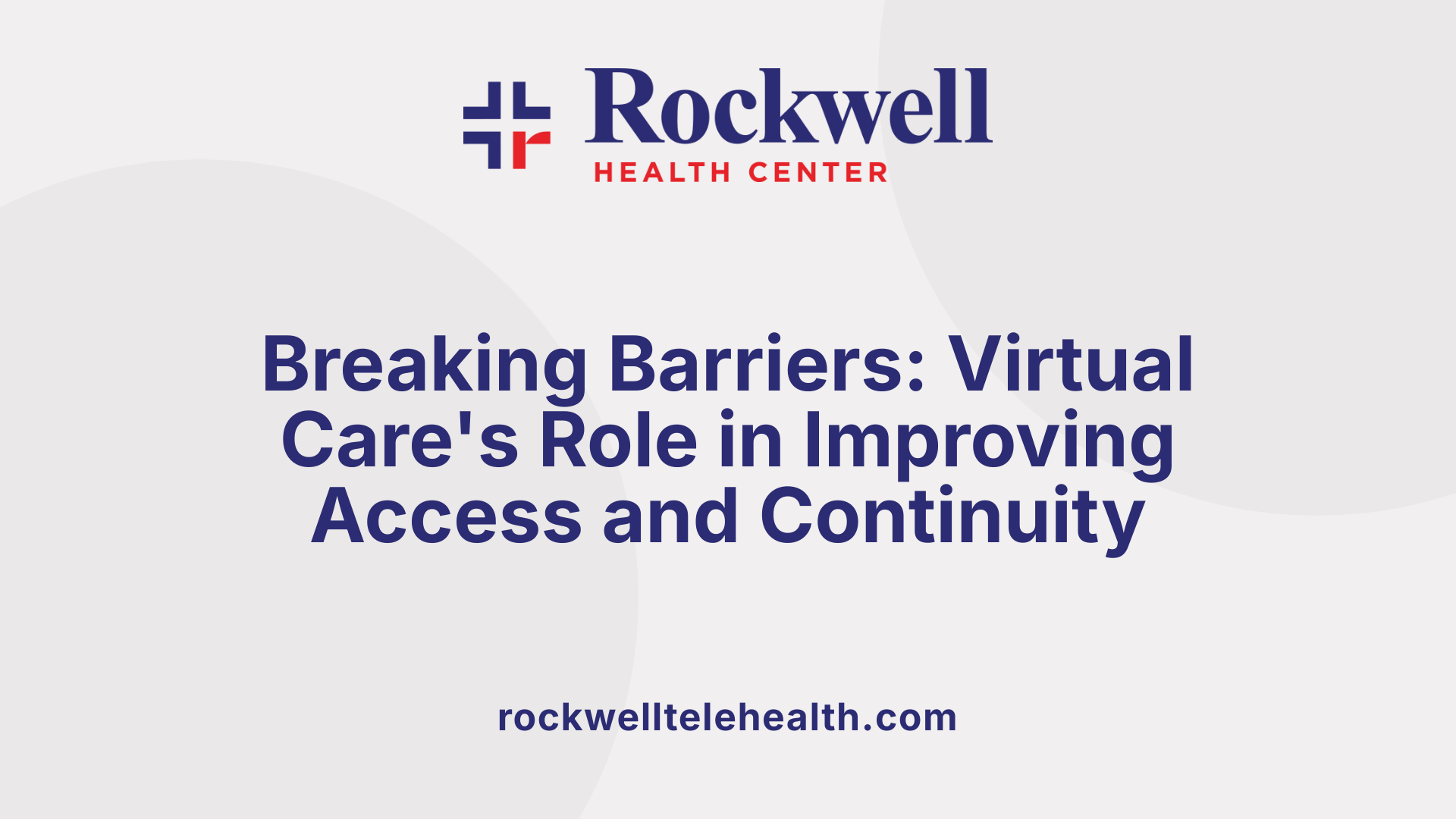
What are the advantages of virtual primary care in terms of healthcare access and continuity?
Virtual primary care significantly improves healthcare access by removing common barriers like distance, limited mobility, and transportation issues. Patients living in rural or underserved areas can connect with experienced, board-certified providers easily through secure video visits, eliminating the need for long travel or time-consuming commutes.
Flexibility and timeliness are among the most appreciated benefits. Patients can schedule appointments online seven days a week between 6 a.m. and 11 p.m., fitting healthcare into busy schedules. This convenience means shorter wait times, often offering same-day or next-day appointments, and instant messaging options for follow-up questions, which enhances overall patient engagement.
Managing chronic diseases is easier with virtual primary care. Patients can receive ongoing, personalized support for conditions like diabetes, allergies, or mental health concerns from their trusted providers. Regular virtual check-ins and remote monitoring help maintain treatment plans and make adjustments promptly, which is vital for effective disease management.
Care continuity—having a consistent relationship with the same primary care provider—can be seamlessly maintained through virtual platforms. This ongoing relationship fosters trust, improves communication, and contributes to better health outcomes. Virtual care providers can coordinate with specialists and access medical records easily, ensuring coordinated and comprehensive care.
Overall, virtual primary care broadens access, offers adaptable scheduling, supports chronic condition management, and sustains ongoing patient-provider relationships. These advantages make healthcare more accessible, efficient, and attuned to the needs of modern patients.
The Future of Virtual Primary Care and Healthcare Systems Integration
How is technological advancement shaping virtual primary care?
Emerging technologies are revolutionizing virtual primary care. Artificial intelligence (AI), machine learning algorithms, and enhanced telehealth platforms are making virtual visits more efficient and personalized. These innovations enable providers to better analyze patient data, predict health risks, and deliver tailored health advice remotely.
Video conferencing tools continue to improve, offering high-quality, secure connections that mimic in-person interactions. Additionally, integration with electronic health records (EHRs) allows seamless sharing of information across care teams, supporting comprehensive management of chronic conditions, preventive care, and mental health services.
In what ways is virtual primary care expanding access?
Virtual primary care significantly increases healthcare accessibility, especially for rural or underserved communities. Patients can schedule appointments online seven days a week, from early morning to late evening, reducing barriers like travel, waiting times, and busy clinic hours.
Services are available across Wisconsin and Illinois, often covered by insurance with no extra fees. This model benefits caregivers supporting aging parents, individuals with mobility challenges, and those with chronic illnesses who require regular monitoring.
How does virtual-primary care integrate with traditional in-person services?
Successful integration involves coordination between virtual and in-person care. When necessary, virtual providers collaborate with specialists and facilitate referrals for in-person visits. They have access to labs, imaging, and specialist consultations, ensuring continuity and comprehensive care.
This approach enables a hybrid model where initial assessments or routine follow-ups are conducted virtually, while more complex evaluations occur face-to-face. Such integration optimizes resource utilization, enhances patient experience, and maintains high-quality care.
What measures are being taken to address disparities in virtual care?
Disparities in virtual healthcare access remain a concern. Efforts include expanding high-speed internet in rural areas, providing multilingual and culturally sensitive services, and ensuring platforms are easy to navigate. Policies focus on equitable access to technology, patient education, and workforce diversity.
Technology like video visits helps establish better communication, but challenges like lack of visual cues or experience for new patients persist. Building trust through skilled communication, offering multiple modalities (video and phone), and ensuring privacy are crucial strategies.
What is the long-term outlook for virtual primary care?
The outlook is optimistic. As technology advances, virtual primary care is expected to become a core component of healthcare delivery. Efforts to improve privacy, user experience, and integration will make virtual visits more natural and effective.
Healthcare organizations are investing in innovative tools and strategies to expand virtual services, improve patient-provider relationships, and achieve better health outcomes. Virtual care's flexibility, affordability, and accessibility will play a significant role in future healthcare systems.
Overall, virtual primary care is poised to complement and enhance traditional services, addressing shortages, reducing costs, and making healthcare more patient-centered and equitable.
| Aspect | Details | Impact |
|---|---|---|
| Technological Advancements | AI, secure video, EHR integration | Improved service quality, personalization |
| Access Expansion | 24/7 scheduling, coverage for underserved | Broader access, convenience |
| System Integration | Coordination with in-person, specialist access | Continuity, comprehensive care |
| Disparity Solutions | Internet expansion, multilingual platforms | Lessening digital divide |
| Long-Term Outlook | AI, better interfaces, policy support | Mainstreaming virtual primary care |
The future of telehealth and virtual primary care promises a more connected, efficient, and equitable healthcare landscape, benefiting both patients and providers alike.
Building the Future with Connected Care
As virtual primary care continues to evolve, its core strength lies in building enduring, trust-based relationships between patients and providers. Leveraging technology not only helps overcome traditional barriers but also enhances the quality, personalization, and responsiveness of healthcare. With ongoing innovations and a focus on equity and patient-centeredness, virtual primary care is set to redefine the landscape of healthcare, making it more accessible, effective, and human at its core. The commitment to integrating virtual services seamlessly into our healthcare systems promises a healthier, more connected future for all.
References
- Virtual Primary Care
- Daily Dose - Virtual Primary Care: A Flexible, Personalized ...
- Virtual Primary Care Clinic
- Understanding how virtual care has shifted primary ...
- 5 surprising facts about virtual primary care - Coverage
- CVS Health launches new virtual primary care offering
- Virtual primary care: Is the hype real?
- Virtual Primary Care | See an Online ...
- Telemedicine Impact on the Patient–Provider Relationship ...
- What is Virtual Primary Care?




















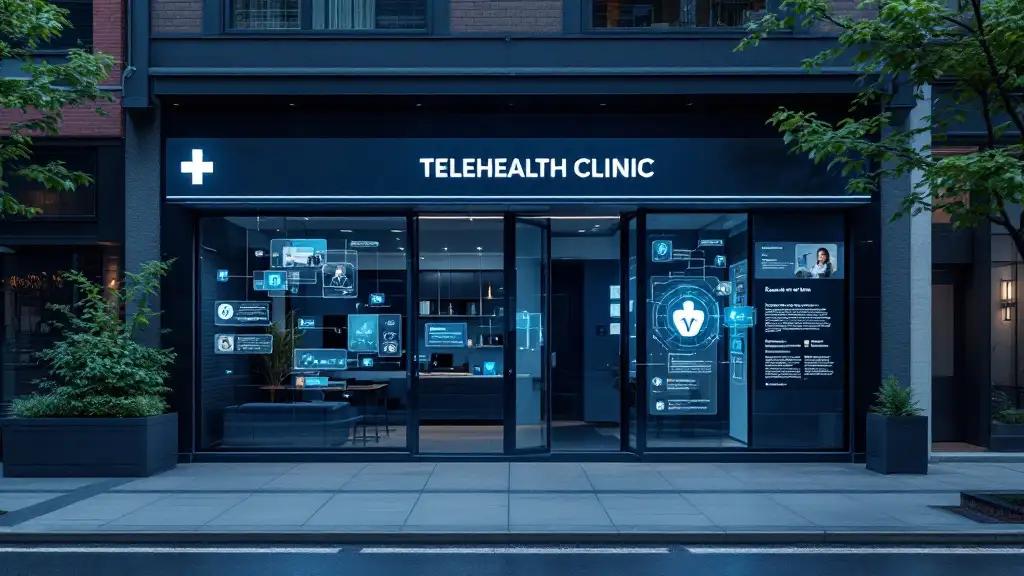













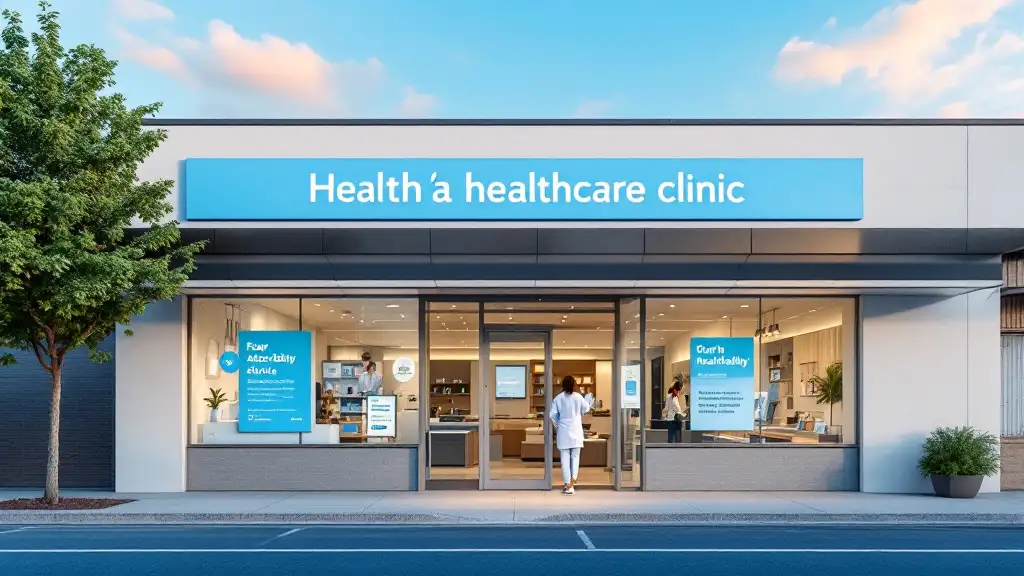





















































.png)